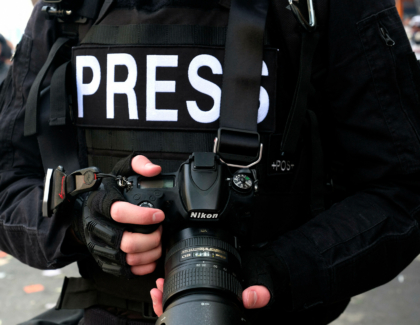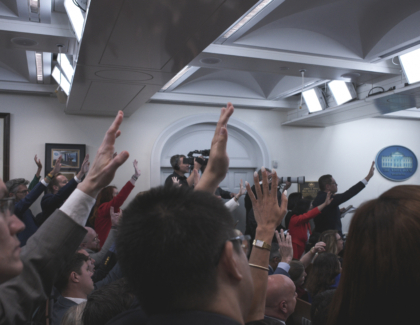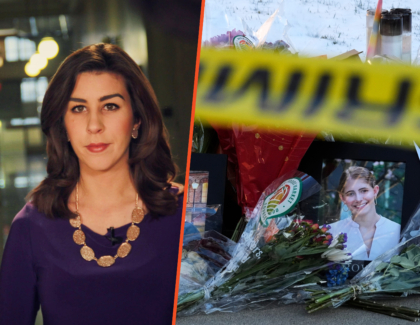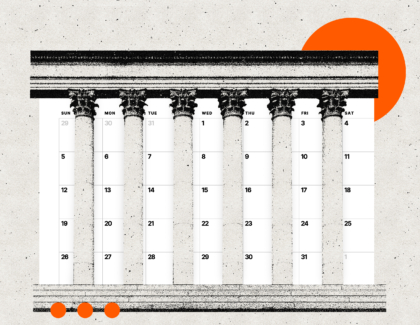Sign up for the daily CJR newsletter.
Shortly before midnight on Friday, George H.W. Bush died at home in Houston. He was 94. Bush’s death set the stage for a weekend of tribute. Although some media coverage of America’s 41st president (mostly in left-leaning outlets) was harshly critical, the majority was glowing and nostalgic. In between, nuanced depictions of a complicated life got crowded out. The tenor of the news cycle felt much as it did in August following the death of John McCain.
As the news filtered through, many outlets published their obituaries of Bush. Obituaries are a strange art—most big news organizations write them in advance then keep them in cold storage, particularly when subjects are advanced in years and/or have a serious medical condition (Bush announced, in 2012, that he was living with vascular parkinsonism, a mobility-limiting disease). Political obituaries, in particular, can thus feel suspended in time—infusing the historical period they cover with the assumptions and values of when they were written. When finally published, obituaries are updated to mirror the mood of the day—setting a narrative around a dead public figure that subsequent coverage tends to reinforce.
ICYMI: Headlines editors probably wish they could take back
In Bush’s case, that coverage has been dominated by favorable comparisons to President Trump. Bush’s death, much like McCain’s before him, became a metaphor for the death of civility in politics. A warm letter Bush wrote his successor, Bill Clinton, was held up as an artifact of bipartisan comity, as BuzzFeed’s Anne Helen Petersen noted in an insightful post. Many outlets highlighted Bush’s broad public popularity—both during his presidency and now—as an example of rare national consensus. And on cable news, in particular, commentators portrayed Bush as an honorable man who did politics the nice way. On CNN, Colin Powell, chairman of the joint chiefs of staff under Bush, summed up much coverage when he said, “Politics need not be mean and nasty, and he lived by that.”
Obituaries and the coverage leading off of them are news stories, not historical scholarship, so it’s understandable that they plug into current events. It is ironic, then, that the press glossed over Bush’s failures and flaws when so many of them track closely with recent developments in our politics. Just last month, Bush’s racist 1988 Willie Horton spot—the low point of two highly divisive presidential runs—was explicitly compared to a Trump campaign ad painting migrants as bloodthirsty criminals. Likewise, the Brett Kavanaugh saga re-upped Bush’s appointment of Clarence Thomas to the Supreme Court—Bush stuck with Thomas, as Trump stuck with Kavanaugh, despite credible allegations of sexual misconduct against his nominee. And Bush’s decision, as he prepared to leave office, to pardon defendants in the Iran–Contra scandal to shield himself from further investigation chimes, at least in some small way, with Trump’s reaction to the Mueller probe: just last week, Trump refused to rule out a pardon for Paul Manafort.
None of this is to diminish Bush’s many achievements, nor is it to say he was similar to Trump: he was not. But the focus on Bush’s comparatively civil style—to the exclusion of almost everything else—made much coverage of his death feel hagiographic. Even mild negativity was given a wide berth. Bizarrely, the AP said yesterday that it deleted a tweet and revised a story on Bush’s death “because the tweet and the opening of the story referenced his 1992 electoral defeat and omitted his WWII service.” (Its initial tweet had attracted right-wing ire online.)
As the cliche goes, journalism is the first rough draft of history. In a clear-eyed assessment for Politico on Saturday, historian David Greenberg wrote that in media coverage, “respect for the dead must coexist with respect for the historical record.” Over the weekend, many obituaries and follow-up stories missed the opportunity to judge Bush’s presidency by those standards, rather than the diminished stature of the White House’s current occupant.
Below, more on the life and death of George H.W. Bush:
- Available, accessible, and informed: On CNN’s Reliable Sources, Brian Stelter and guests discussed what it was like to cover the first Bush White House. “Bush was available, he was accessible, he was informed and gosh, that’s what journalists like,” remembered Charles Bierbauer, who covered his administration for CNN. “Access is the most important thing.”
- More remembrances: The New York Times’s Peter Baker reconstructs Bush’s final moments. Also in the Times, Maureen Dowd reflects on her mutually respectful relationship with the president she covered, despite their very different backgrounds, while in The Washington Post, Thomas Boswell remembers how Bush would contact him for sporting tips.
- “The last true WASP”: The Atlantic’s Franklin Foer writes that fawning media coverage of Bush reflects a deeper-seated mourning for the passing of the Establishment. “For more than a century, this Establishment resided at the top of the American caste system. Now it is gone, and apparently people wish it weren’t,” Foer writes. “But good manners are hardly the same as moral courage; prudence is sometimes hard-hearted. Those who are mourning the passing of the old Establishment should mourn its many failures, too.”
- A #MeToo omission: Multiple women accused Bush of inappropriate touching late last year, but those allegations were largely absent from coverage of his death. “In its long and thorough obituary, The New York Times made no mention of the allegations. Nor did The Washington Post, The Wall Street Journal, USA Today, the Los Angeles Times, or the Associated Press,” Slate’s Molly Olmstead writes.
- World AIDS Day: World AIDS Day was also underplayed on Saturday—a cruel irony given Bush’s inaction in the face of the AIDS crisis, Steven W. Thrasher writes in The Nation. “Bush dangerously hid the vast nature of American violence beneath the seductive cloak of civility, that opiate of mass media that gets journalists and readers to let violence go unremarked,” Thrasher says.
Other notable stories:
- In the UK, lawmaker Kate Osamor resigned from the opposition Labour Party’s leadership team following reports that she threw a bucket of water over a Times (of London) reporter at her home, then threatened to “smash [his] face in” with a bat. Osamor attracted scrutiny after her son—who she employs in her parliamentary office—was sentenced for taking $3,000 worth of drugs into a music festival. The Times reported that Osamor misled the public about when she found out.
- In France, meanwhile, journalists nationwide have found themselves on the end of threats and physical violence as a wave of civil unrest sweeps the country in response to rising diesel taxes. For CJR, Martin Goillandeau and Makana Eyre report that a protester broke a photographer’s cheek bone in three places with a punch. Another journalist is under police protection.
- In the hours immediately before and after dissident writer Jamal Khashoggi’s murder in early October, Saudi Crown Prince Mohammed bin Salman sent at least 11 messages to the adviser overseeing the operation, The Wall Street Journal’s Warren P. Strobel reports. The call log underpinned the CIA’s assessment that MBS was likely responsible for Khashoggi’s killing—an assessment rejected by Trump.
- Nexstar has agreed to buy Tribune for just over $4 billion—a deal which would make it the largest US operator of local TV stations, Reuters’s Carl O’Donnell and Liana B. Baker report. The move comes just three months after Tribune’s attempted deal with Sinclair fell through.
- The editorial arm of Ceros, a creative software company, looked at the increasingly diverse covers of 10 glossy magazines since 2012. Over the last two years, more than half the covers of Allure and InStyle featured people of color, Ceros found. Nearly a third of Vanity Fair covers did likewise—up from just 9 percent over the prior four-year period.
- On Friday, Canada’s Supreme Court ordered Ben Makuch, a national security reporter for Vice, to let police access materials related to his interview with an alleged ISIS recruit—settling a long-running legal battle. Makuch called the verdict a blow to press freedom, as did advocacy groups like the Committee to Protect Journalists.
- After the Har-Ber Herald, a high school newspaper in Arkansas, published a lengthy investigation into the transfer of five football players to a rival school, its school district suspended it, then threatened to fire its faculty adviser, BuzzFeed’s Amber Jamieson reports.
- And on Friday, Tavi Gevinson announced the closure of Rookie, the online magazine that grew out of a fashion blog she started when she was 12. The Cut’s Amanda Arnold writes that Rookie “changed the internet” for girls and women. “The publication was known for its explicitly feminist lens, refreshing approaches to classic teen magazine sections like ‘Dear Diary,’ and alt-90s nostalgia,” Arnold says.
ICYMI: Remembering John McCain and his relationship with the press
Has America ever needed a media defender more than now? Help us by joining CJR today.







